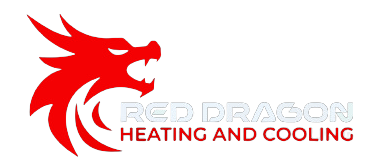- 518.348.9000
- [email protected]
- 117 Van Rd Gloversville,NY 12078
Air Filtration: Essential Techniques for Cleaner Indoor Air
Air filtration plays a critical role in maintaining healthy indoor air quality by removing contaminants and pollutants from the air.
Clean air is essential for our health, particularly in environments where we spend extended periods, such as homes, schools, and workplaces.
Investing in a reliable air filtration system can drastically reduce the presence of allergens, bacteria, and even harmful particles like fine dust.
There are various types of air filtration systems, each designed to tackle specific air quality issues.
HEPA filters, for instance, are renowned for their capacity to remove particles as small as 0.3 microns, making them highly effective in eliminating dust mites, mold spores, and pet dander.
Choosing the right air filtration system depends on the specific needs of the environment and the types of pollutants present.
Energy efficiency and maintenance requirements also factor into selecting an air filtration system.
Some units are designed to operate continuously with minimal energy consumption, offering both clean air and cost savings over time.
Understanding the different technologies available and their respective benefits allows consumers to make informed decisions that best suit their indoor air quality needs.

518 Red Dragon Service Areas Include :

Amsterdam
Amsterdam Air Filtration

Gloversville
Gloversville Air Filtration

Johnstown
Johnstown Air Filtration

Broadalbin
Broadalbin Air Filtration

Fonda
Fonda Air Filtration
Mayfield
Mayfield Air Filtration
Northville
Northville Air Filtration

Principles of Air Filtration
Air filtration involves the removal of contaminants from the air to improve indoor air quality.
Effective filtration relies on specific mechanisms, various types of filters, and defined performance metrics.
Mechanisms of Filtration
Air filtration works through physical and chemical processes.
Mechanical filtration traps particles using physical barriers like fibrous filters.
Electrostatic precipitation uses electrical charges to attract and capture particles.
Gas-phase filtration involves using absorbent materials like activated carbon to remove gases and odors.
Fibrous filters capture particles by inertial impaction, interception, and diffusion.
For sub-micron particles, diffusion is more effective, whereas larger particles are usually intercepted or impacted.
Electrostatic filters leverage high-voltage fields to charge particles, which then adhere to oppositely charged collection plates or areas.
Types of Air Filters
Various air filters address different purification needs.
HEPA (High-Efficiency Particulate Air) filters capture 99.97% of particles 0.3 microns and larger.
ULPA (Ultra-Low Penetration Air) filters provide even higher efficiency, capable of capturing 99.999% of particles as small as 0.12 microns.
Activated carbon filters specialize in removing gaseous pollutants and odors through adsorption.
Electrostatic precipitators use electrically charged components to attract and hold airborne particles.
Each filter type varies in efficiency, application, and maintenance requirements.
Filter Performance Metrics
Air filter performance is measured using several key metrics.
Efficiency indicates the filter’s ability to remove particles of specific sizes.
Pressure drop, or resistance, measures how much the filter impedes airflow.
Lower pressure drop is preferable for maintaining efficient system operations.
MERV (Minimum Efficiency Reporting Value) rating quantifies a filter’s performance on a scale from 1 to 16, with higher values indicating better filtration of smaller particles.
CADR (Clean Air Delivery Rate) measures the volume of filtered air delivered, providing a practical assessment of overall performance.
Air Filtration Systems
Air filtration systems vary in complexity and function depending on their intended use.
Residential systems focus on personal living spaces, while commercial and industrial systems handle larger volumes of air and often deal with more contaminants.
Residential Systems
Residential air filtration systems are typically designed to improve indoor air quality in homes. They often use High-Efficiency Particulate Air (HEPA) filters, which capture particles as small as 0.3 microns.
These systems help reduce common pollutants like dust, pollen, pet dander, and smoke.
Some advanced models also incorporate activated carbon filters to eliminate odors and volatile organic compounds (VOCs).
A key consideration for homeowners is the system’s energy efficiency and noise level.
Installation can be integrated into existing HVAC systems or come as standalone units.
Regular maintenance, such as filter replacement, is crucial for optimal performance.

Commercial and Industrial Systems
Commercial and industrial air filtration systems are engineered to manage larger spaces and higher levels of pollutants.
These systems can include multi-stage filters, such as pre-filters, HEPA filters, and activated carbon filters.
In industrial settings, filters may be specialized to handle specific contaminants like chemical fumes, oil mist, and smoke.
The systems are designed to maintain air quality standards set by regulatory bodies.
Maintenance of these systems is often more complex and may require professional services.
System capacity, durability, and compliance with industrial standards are critical for ensuring efficient and effective operation.

Installation and Maintenance
Installation
When installing an air filtration system, adherence to the manufacturer’s instructions is critical.
Begin by selecting an appropriate location—away from direct sunlight and extreme temperatures.
Ensure the chosen spot allows for easy access to change filters when needed.
Securely mount the filtration unit using the provided brackets or hardware.
Proper alignment is vital for optimal performance. Check all connections for air-tightness to avoid leaks.
Maintenance
Regular maintenance keeps the air filtration system running efficiently.
The filter replacement schedule varies depending on usage and environmental factors. Refer to the manufacturer’s guidelines for specific timelines.
Common maintenance tasks include:
- Replacing Filters: Monitor the filter’s condition regularly and replace as needed. This step is crucial for maintaining air quality.
- Cleaning Pre-Filters: If your system includes a pre-filter, clean it periodically to remove dust and debris.
- Inspecting Seals: Check the seals around the unit to ensure they are intact. Damaged seals can reduce the system’s effectiveness.
- Monitoring Performance: Keep an eye on the system’s performance metrics. An unusual increase in noise or reduction in airflow may indicate the need for maintenance.
Tips
- Keep a maintenance log to track filter changes and inspections.
- Use only recommended filters to ensure compatibility and performance.
- Schedule regular professional inspections to catch potential issues early.
Emerging Technologies and Trends in Air Filtration
Advancements in air filtration technologies continue to evolve.
One of the notable emerging trends is the use of smart air filters. These filters are outfitted with sensors that monitor air quality in real-time and adjust filtration levels accordingly.
Another innovation is the incorporation of nanotechnology.
Filters enhanced with nanomaterials can capture ultra-fine particles more efficiently. They offer improved performance without increasing energy consumption.
Electrostatic precipitators are also gaining popularity.
They use electric charges to remove particles from the air, which can be particularly effective for industrial applications. These systems are becoming more compact and energy-efficient.

Photocatalytic oxidation (PCO) is another noteworthy trend.
PCO filters use ultraviolet light to initiate a chemical reaction that breaks down pollutants at a molecular level, making them highly effective against volatile organic compounds (VOCs) and bacteria.
A growing interest in biological filtration methods is also observed.
These filters use natural processes, such as plants or microbial action, to purify air, offering an eco-friendly alternative to traditional filters.
Reusable and washable air filters are increasingly in demand as they provide a cost-effective and environmentally friendly option.
Made from durable materials, these filters can be cleaned and reused multiple times, reducing waste.
Integration with smart home systems is making air filtration more user-friendly.
By linking filters to smart home hubs, users can control and monitor air quality remotely using their smartphones.
WHAT WE DO
Expert HVAC Care, Always.


Residential Installations
Trust us to transform your space into a haven of perfect climate control with our expert HVAC installations.

Commercial Installations
Trust us to transform your space into a haven of perfect climate control with our expert HVAC installations.

Thermostat Installations
Trust us to transform your space into a haven of perfect climate control with our expert HVAC installations.

Air Quality Solutions
Trust us to transform your space into a haven of perfect climate control with our expert HVAC installations.
